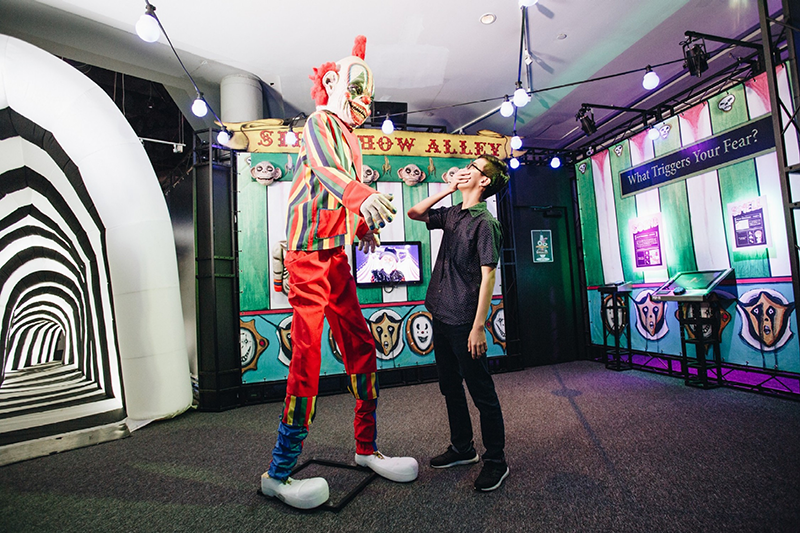Captivating Choices for Science Centers and Museums

Exhibition directors at museums and science centers often face a challenge in deciding whether to create their next exhibit concept in-house or secure a traveling exhibition. Add in limited display space and budgetary constraints, and the dilemma becomes more complex.
With insights on Science Centre Singapore’s top exhibitions from the exhibitions director and staff, Funworld looks at how museums and science centers make the tough choices of which exhibits to feature.
Science Centre Singapore makes its selections by first looking at trends.
“The center scans the horizon for contemporary topics that might be of interest to our public,” says Eugene Wambeck, deputy director of exhibitions, advancement, and partnership. “These include climate change and sustainability but also point toward new and emerging topics, such as smart technologies. Our links to research academies and institutes of higher learning are another key element in staying on track with frontier research.”
He adds that with traveling exhibitions, the Science Centre Singapore team looks for contemporary exhibits themed to interesting, current, and popular topics. Some examples include “Marvel Avengers S.T.A.T.I.O.N.,” “Transformers,” and “Pixar: 30 Years of Animation” because they appeal to a wide spectrum of audiences.

An ideal example of this process is “DinoQuest,” an extensive recent exhibition created in-house at Science Centre Singapore. “Dinosaur exhibitions are among the most popular exhibitions of all time at science centers and science museums,” says Wambeck. “Most of them focus on the stars of the show, namely the dinosaur fossils or representations of the lives of dinosaurs captured as snapshots in time. We wanted to put a different spin on this by also highlighting the other stars, the paleontologists. We wanted to inspire a quest and share the excitement of discovery through a themed adventure.”
“DinoQuest” came about as a result of a discussion with a fellow of Science Centre Singapore, Emerita Professor Patricia Vickers-Rich, and was brought to fruition with the center’s exhibition partners Dezign Format and Digimagic Communications. Vickers-Rich provided expertise and a collection of fossils, and five Science Centre Singapore team members took part in the one-and-a-half-year development process, starting in late 2017, with the 2,000-square-meter exhibition launching in May 2019. After its stint at Science Centre Singapore, “DinoQuest” was to travel to China and then Malaysia, but those plans are on hold until the global pandemic runs its course.
The exhibit is a culmination of more than 40 years of work by Vickers-Rich and her husband, Professor Thomas Rich, at Dinosaur Cove, a famous fossil site in Victoria, Australia. “DinoQuest” turns guests into explorers as they trace dinosaur history through seven thematic zones and examines polar dinosaurs that lived close to the South Pole.
The exhibit’s interactivity model uses technology and gamification to make guests feel like they’re playing the role of paleontologists at dig sites, discovering fossils and the secrets of dinosaurs.
While dinosaurs are a draw, science center teams have a greater challenge when the subject matter is more abstract. This is what the Science Centre Singapore team faced when the center unveiled “Phobia2: The Science of Fear” in April 2018, an exhibit designed by Newman Entertainment International that’s still fascinating guests today.

“Fear is intrinsically wired into our brains,” says Wambeck. “The exhibition explains this basic biology but also delves into the many different phobias, highlighting the ones that have been amplified by society.”
Wambeck says the exhibition is significant in two ways. First, it marks one of the first times the emotion of fear has taken center stage at a museum in Asia. Plus, the exhibit brings out the “human” element the center aims to cover.
“It’s our view that science centers can be safe places to shine a light on topics not often covered or discussed enough, topics such as phobias … that have societal relevance and can benefit from a scientific presentation.”
However, such exhibitions can’t be all hard science if they’re designed to attract a wide variety of guests. In recent years, numerous science centers and museums have incorporated the interactivity and entertainment features theme parks have mastered in their attractions. Science Centre Singapore did this with “Professor Crackitt’s Light Fantastic Mirror Maze,” which fuses a story with exhibits that contain a 275-square-meter mirror maze and offer more than 17 entertaining experiments, featuring holograms and fake exits. The maze was designed by Adrian Fisher Design Ltd.
“Exhibits don’t just have educational value, they also have a strong mandate and opportunity to engage and entertain our audiences,” says Wambeck. “Our team doesn’t just take in exhibitions; we like to leave our mark by working with the respective firms to add our flavor. We do this because we intimately understand our audience and context. Often times, it starts off with a crazy idea, and the team is challenged to make this experience more immersive or thought-provocative.”
Founded in 1977, Science Centre Singapore has welcomed more than 30 million visitors since 1997. The museum believes in its proactive approach to creating exhibitions that will attract millions more in the years ahead.
